Ultra-high-resolution images show matter screaming away from a truly gargantuan black hole
There are things in the universe that truly astound me. Additionally, there are times when we observe them and experience the same emotions.
One of these is OJ 287. It’s a special kind of galaxy called a blazar, in which the galaxy’s core is irradiating enormous amounts of light from across the electromagnetic spectrum, including super-high-energy gamma rays. It shines brighter than the entire galaxy united just in that little center area, which emits the equivalent of a trillion Suns. It’s 3.5 billion light years distant, which is good news. It’s preferable to keep something like this and a sizable portion of the Universe apart.
A black hole that will crush your head is the source of this energy that will vaporize your soul: It is one of the most gigantic known objects and may perhaps be the most massive object that is physically feasible with a mass exceeding 18 billion times that of the Sun. It is surrounded by a huge disk of material known as an accretion disk, in which gas and dust are burned to incredible temperatures, which in turn provide the energy we observe from the galaxy.
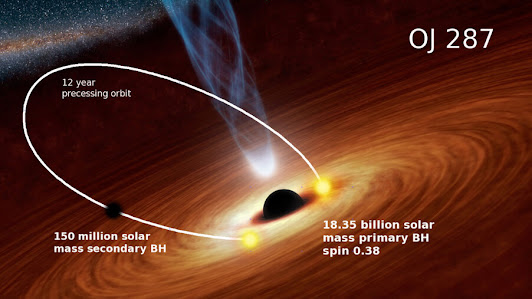
And there’s more, unbelievable: A second supermassive black hole, 150 million solar masses in size, is in close orbit around the primary monster. Despite the fact that its elliptical course takes it 500 billion kilometers (nearly 100 times the distance from the Sun to Neptune) from the larger black hole, the disk of material is so vast that it extends far beyond. The second black hole thus directly pierces this disk twice per orbit like a rocket piercing a cloud. And when it does, a powerful extra burst of radiation is produced by some as-yet-unknown process.
Who among us with any imagination would not be awestruck by such powers?
Since its discovery more over a century ago, OJ287 has been the subject of intensive research. But as fascinating as the science is, fresh observations taken by a team of astronomers have revealed more information about the galaxy’s interior than ever before, and the images themselves are remarkable.(link to paper).
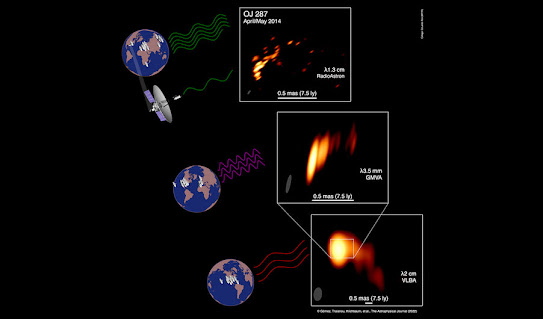
The curved jet of the black hole in the galaxy OJ 287 may be seen with incredible clarity because to interferometer measurements. The best resolution of the blazar yet observed may be seen in the bottom image, which was created using a group of Earth-based radio telescopes. The middle image was created using additional telescopes, while the top image was created using an orbiting radio telescope. Picture from The Astrophysical Journal, 2022, by Gómez et al. and Eduardo Ros/MPIfR (Collage) (Bilder)
Interferometry, a method, was used to make the measurements at radio frequencies. In order to simultaneously combine the capabilities of radio telescopes around the world, a complicated process is used. The result is essentially the creation of a single linked telescope with the same resolution—the capacity to distinguish particulars in an object—as one the size of the distance between them. I’ve written about this a lot, including the first-ever images of a black hole’s “shadow,” the surface of a red giant star, and exoplanets orbiting other stars.
Using this method, an Earth-sized telescope may be created by connecting radio telescopes all around the planet. However, the most recent OJ287 findings go one step further: They also included the 10-meter Spektr-R radio telescope that is orbiting the Earth. Because of its eccentric orbit, it passes by our planet and is almost as far away as the Moon. The baseline between telescopes went from being the size of the Earth to one that is 15 times larger thanks to the observations of OJ287. The resolution of some of the astronomers’ observations is 12 microarcseconds, which is so minute it is difficult to comprehend. Comparable to being able to view a US quarter from half way around the moon
The resolution of Hubble is very nearly 0.05 arcseconds. These observations have a 40,000-fold increase in sharpness. Yegads. The resolution of even their lesser quality photos is 50 microarcseconds. Amazing.
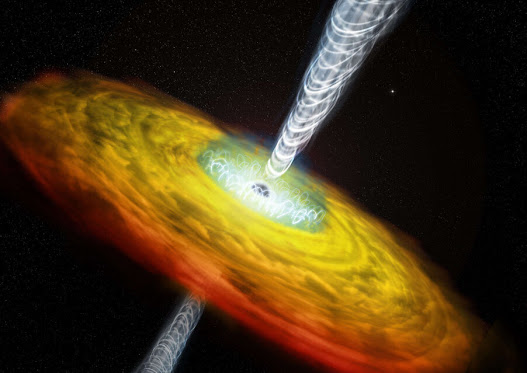



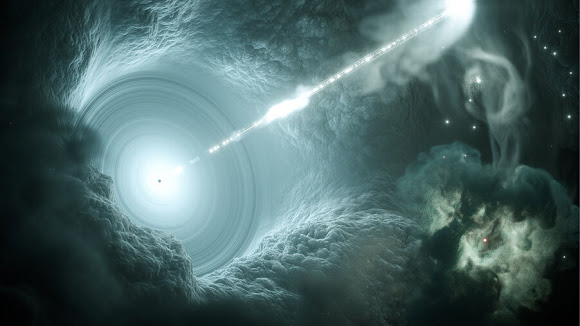

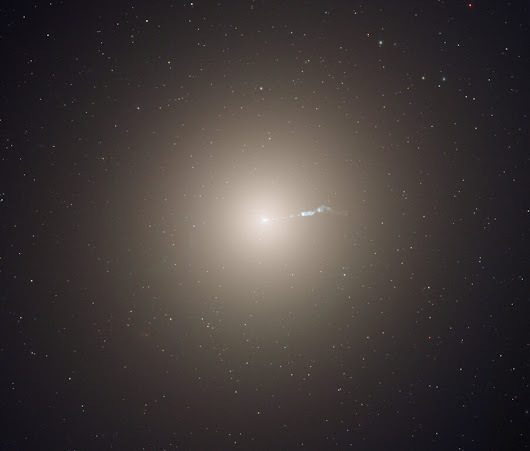
0 Comments